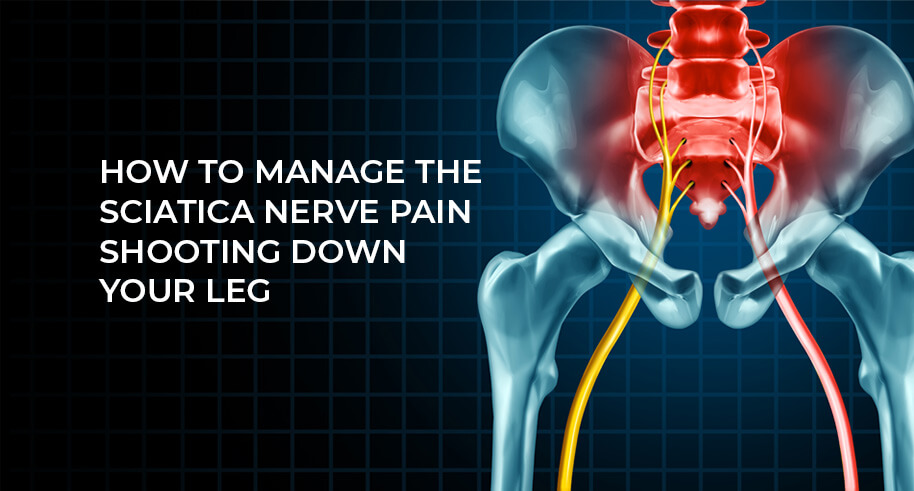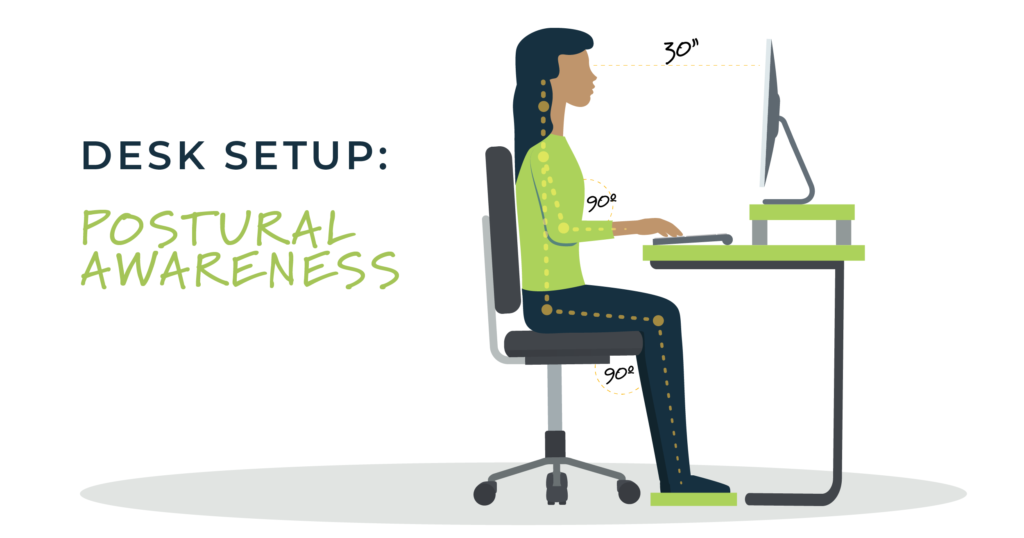
How to Manage the Sciatica Nerve Pain Shooting Down Your Leg
Ouch! Sciatica can be debilitating (and totally miserable.) So what causes it, and how can you find lasting relief?

Sciatica self care is a welcome phrase for anyone who’s ever felt that sharp, electric nerve pain that starts in your lower back, radiates through your glutes, and shoots past your calves curling your toes.
On average, about 40% of Americans will suffer from sciatica nerve pain in their lifetime. The kind of nerve pain that would make anyone desperate for immediate relief. So we’ve compiled some sciatica self care tips you can try at home: body posture awareness, specific exercises, targeted stretching, and hot or cold applications. These tips do not replace professional chiropractic care for sciatica, and you should always get a thorough evaluation and diagnosis from a Doctor of Chiropractic if your pain persists.
Once you know more about how and why your sciatic nerve flares up, you can apply one or all of the following at-home pain relief tips.
Sciatica is the irritation and/or compression of the sciatic nerve, the body’s longest nerve originating in the lower lumbar spine and traveling down each leg to your feet. Aggravating it can cause anything from mild discomfort to painful tingling, numbness or weakness all the way down your legs to your feet. So you’ll need to pay close attention to all of those body parts.
A quick and easy postural fix for unnecessary strain on your spine and hips. If you work at a desk for the majority of your day, pay attention to how your body is positioned within your chair. Do you slouch? Is there pressure on your sacrum and/or lower back? Does it hurt when you go to stand up? Are you bent over or is your body contorted in an unnatural way for long periods of time?
If you said yes to any or all of these questions then try:
Sitting up straight in your chair, allowing the top of your hips (aka the area whereby a belt would lie on your torso) to roll slightly forward. This will allow a natural curve in your lumbar spine (low back) so that your upper thoracic (mid-back to shoulders) can rest more comfortably as you work.
Take breaks. Get up and walk around once an hour, if not more, to keep the blood flowing and your body mobile. If you are experiencing a sciatic nerve flare-up this will help eliminate stagnation and further compression.

Maintaining good posture is critical to sciatica self care
When you are in pain your natural instinct is to avoid physical activity and curl up in fetal position. Depending on the level of pain you are in and the degree of nerve impingement you are experiencing, low-impact exercises that activate your back and legs can be incredibly helpful. Ride a stationary bike, engage in a mild yoga practice, go swimming, or do water aerobics. These types of movements will continue to strengthen your back muscles and mobilize your hips.
If you’ve seen a chiropractor and have the green light to add in more specific exercises for the back, glutes, and hamstrings please do so. Stronger musculature helps support the spine and can alleviate spinal pressure, especially if the culprit to your sciatica is a herniated disc.
In some cases the sciatic nerve is pinched by inflammation or irritation of your body’s muscles within the low back, glutes, hamstrings, or calves. Stretching these areas slowly and gently can help loosen tight muscles, increase blood flow and make sciatica self care feel good. If you notice an increase in pain, stop immediately to avoid further aggravation of the nerve.
3 stretches that can help are as follows:
+Lie on your back
+Bend your knees so that they are stacked above your hips and your shins are parallel to the floor
+Cross your right ankle over your left thigh, and thread your right hand between your legs
+Pull your left knee slightly towards you until you feel a stretch in your right glute
+Hold for 15-30 seconds
+Repeat on the other side
+Lunge your right leg forward at a 90 degree bend and place your left knee on a pillow
+With your hands on your hips, tuck your tailbone down towards your back left foot
+Keeping that tilt in your hips, lean forward toward your right knee
+You’ll feel a stretch in your back left thigh and hip crease
+Hold for 15-30 seconds
+Repeat on other side
+Grab a towel, strap, or long sleeve shirt
+Lie on your back with legs straight and a pillow under your head
+Lift your right leg until you can wrap a strap around your calf or ankle
+Straighten your leg and guide it closer to your face by pulling on the strap with both hands
+Your left leg on the ground can be bent if needed
+Move your hands closer to your leg along the strap so that your arms are straight
+Hold for 15-30 seconds
+Repeat on the other leg
If your sciatic nerve is firing and your muscles throbbing, try some sciatica self care by applying cold and heat therapy. You can experiment by trying one for 5 minutes, then the other for 5 minutes to see what works.
The general rule of thumb is to use ice for acute inflammation (apply for 10-15 min) and use heat for muscle stiffness (apply for no longer than 20 min).
Contrast therapy alternates between applications of ice and heat to relieve the pain. Begin 1 min cold, apply 3 min heat (repeat this pattern 3 times), then finish with 1 min cold. Do this 1 – 2 times per pay until the pain subsides.
For icing, use an ice pack, bag of ice, bag of peas or frozen fruit, and wrap it in a towel to avoid direct contact on your skin. The application will constrict the blood vessels, decrease the swelling, and add relief.
For heat, apply a hot pack, heat pad, or microwaved warm towel to increase circulation, reduce pain, and relieve cramping or aching muscles.
If your condition continues to worsen and/or persist, contact a chiropractor to help. Chiropractic care and adjustments are a non-invasive, viable option for treating the pain and symptoms associated with sciatic nerve issues. A 2006 study published in Spine Journal found that manipulations (adjustments) helped relieve pain due to acute back pain and sciatica. Another study published in 2010 found that 60% of sciatica patients (who hadn’t found relief from other therapies) experienced the same level of relief from chiropractic adjustments as patients who eventually had surgery.
Minimize and manage your sciatic pain with at-home natural remedies, however seek professional care and make an appointment to talk to your local chiropractic doctor to assure long term results. Your sciatic nerve will thank you.
Subscribe and get news, articles & offers sent right to your inbox each month.
"*" indicates required fields
By subscribing you are agreeing to the Terms and Conditions and Privacy Policy.